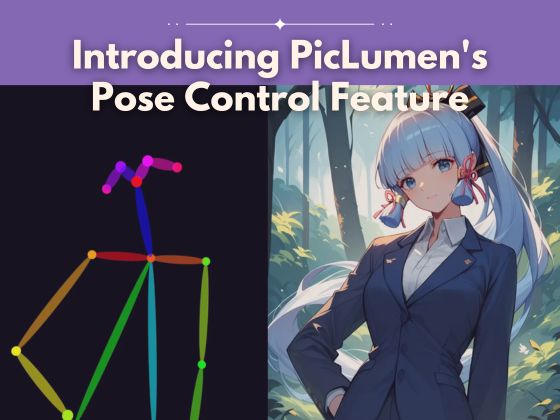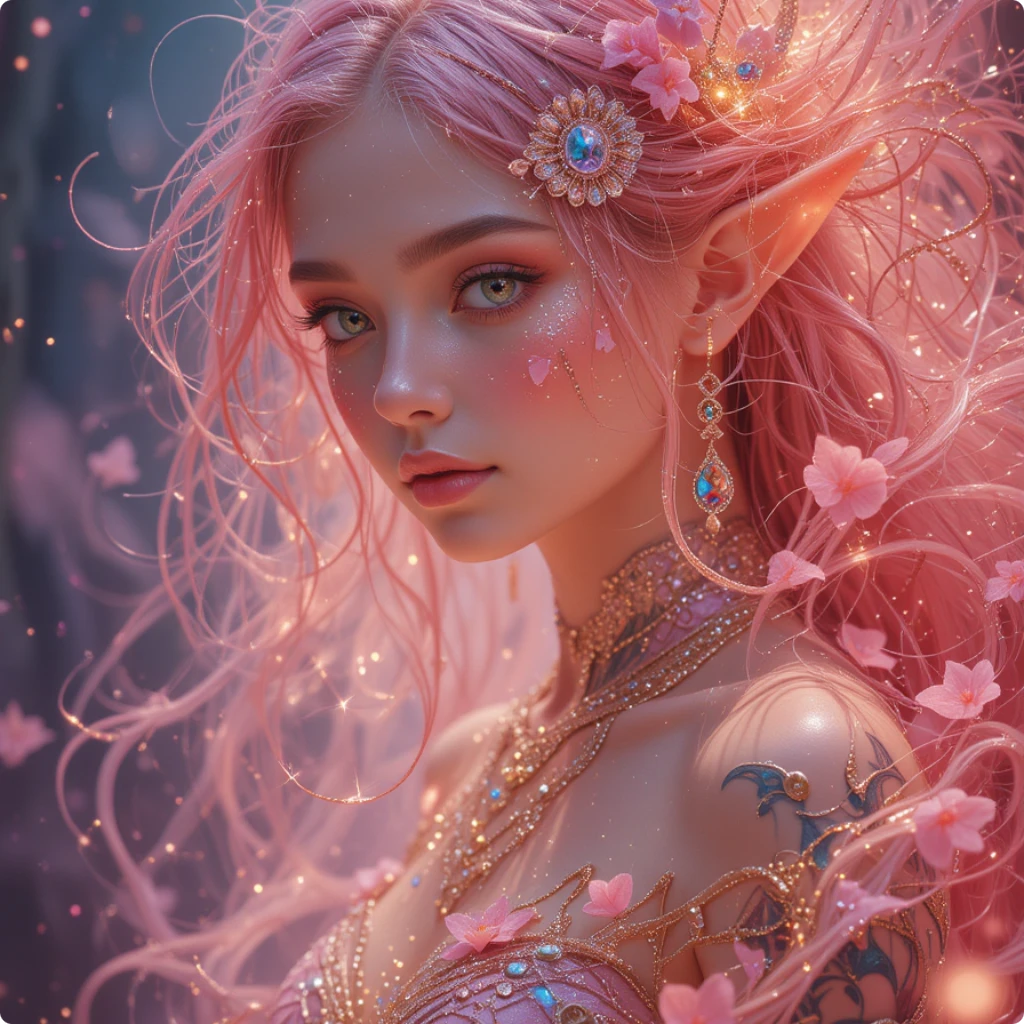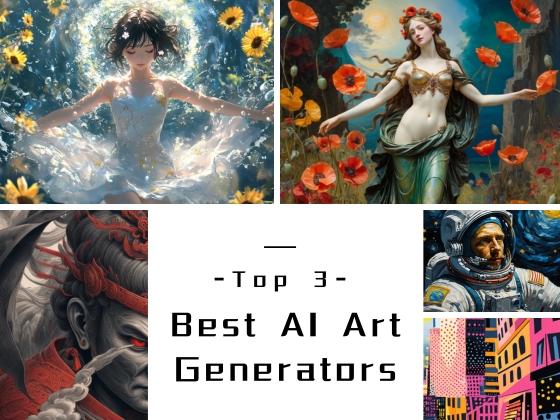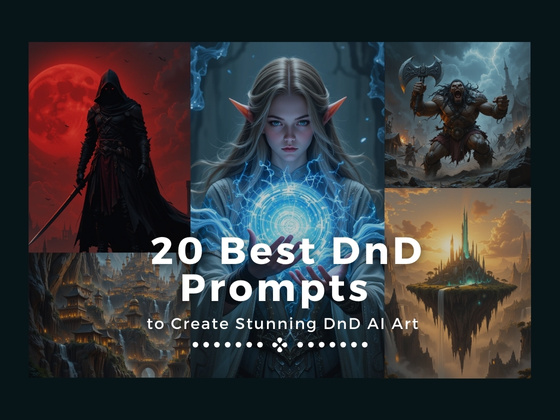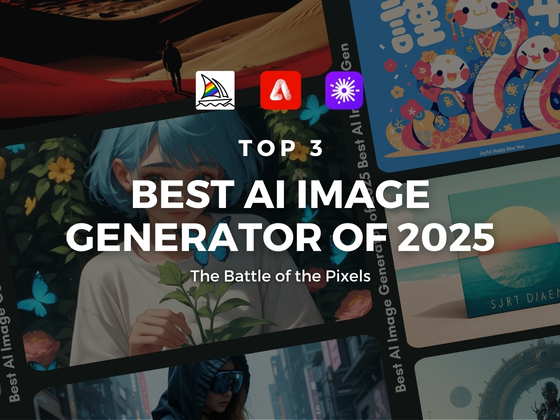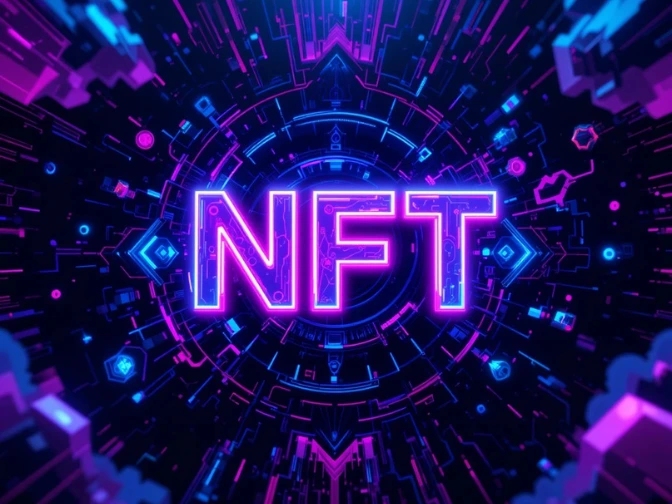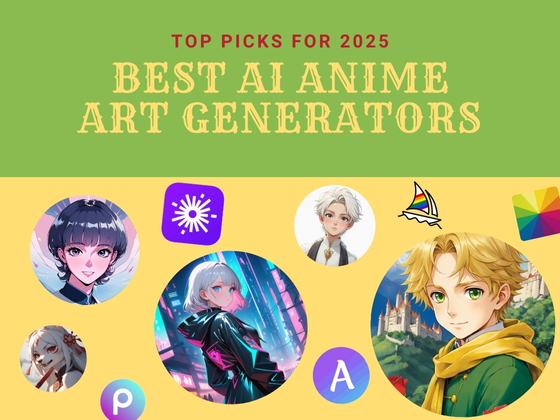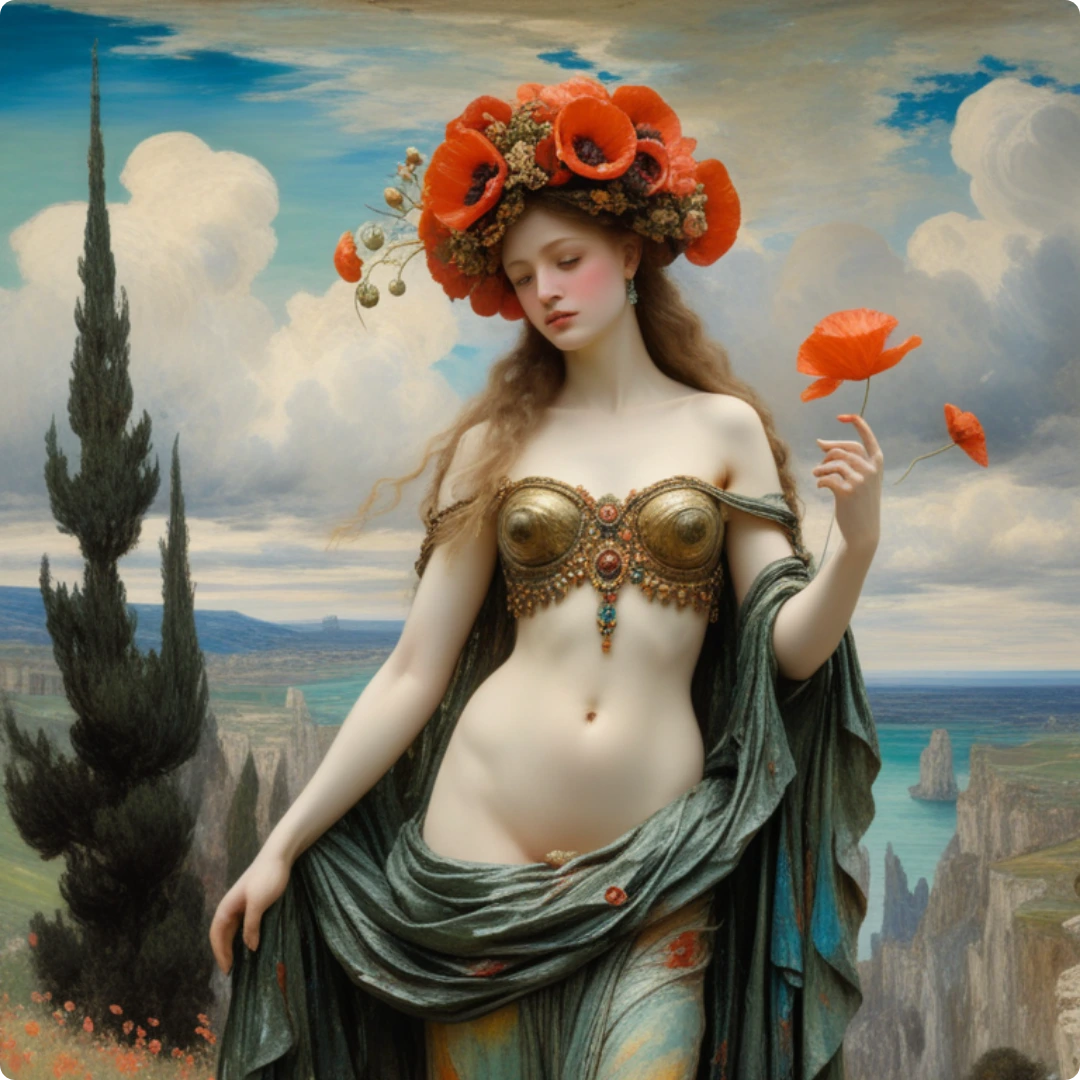What is AI Image Prompts
AI image prompts are directives you give to a model for AI art creation so it can create original artwork. As AI art models become more sophisticated, your suggestions have a greater influence on the outcomes.
The prompts’ accuracy, originality, and comprehension are crucial to the success of AI art. This article describes the format of an AI art prompt and provides examples and writing advice. While text-generative AI systems like ChatGPT, Google Bard, and others may give high-quality results with simple prompts, text-to-image prompts need more explicit demands to produce optimal results. This frequently entails understanding what you want the final product to look like and how to articulate the specifics, lighting, and frame that will help you get there.
How to Write an Effective AI Image Generator Prompt
To write an accurate and effective prompt, it is important to first understand what the basic structure of the prompt looks like. The basic structure contains subject, action verb, topic or substance, settings.
1. Explain what is contained in your picture.
You want to be as specific as you can about the subject matter of your image when crafting an AI art question. Is it a 3D rendering, a sketch, or a drawing? Is it supposed to resemble a picture, or is it supposed to be more illustrated?
Examples:
- A sketch of…
- A photo of…
- An illustration of…
- A 3D rendering of…
2. Explain the topic of the image.
You should describe the theme you wish to produce in every AI image generator prompt. Anything from a person, animal, or item to an intangible idea or feeling might qualify as this. Provide detailed descriptions so the AI generator understands exactly what to search for in your datasets.
Examples:
- A sketch of a house…
- A photo of an office lady…
- An illustration of flowers…
- A 3D rendering of a school building…

3. Describe various elements in the image.
To make a vivid image, you need to add various elements to your prompts.
- The action of the subject: This indicates to the AI what is being taken. For example, two boys playing basketball.
- Action executed statement: This tells the AI how the subject is performing the actions – for example, two boys playing basketball fightful.
- The tone of the image: Adjectives can be used to communicate the scene’s atmosphere or emotion by describing the mood – for example, two boys playing basketball with confidence.
- Background description: This gives the picture context and setting and can contain information about the location, the time of day, the weather, or any other related facts – for example, two boys playing basketball with confidence, in a gym, other classmates cheering around.
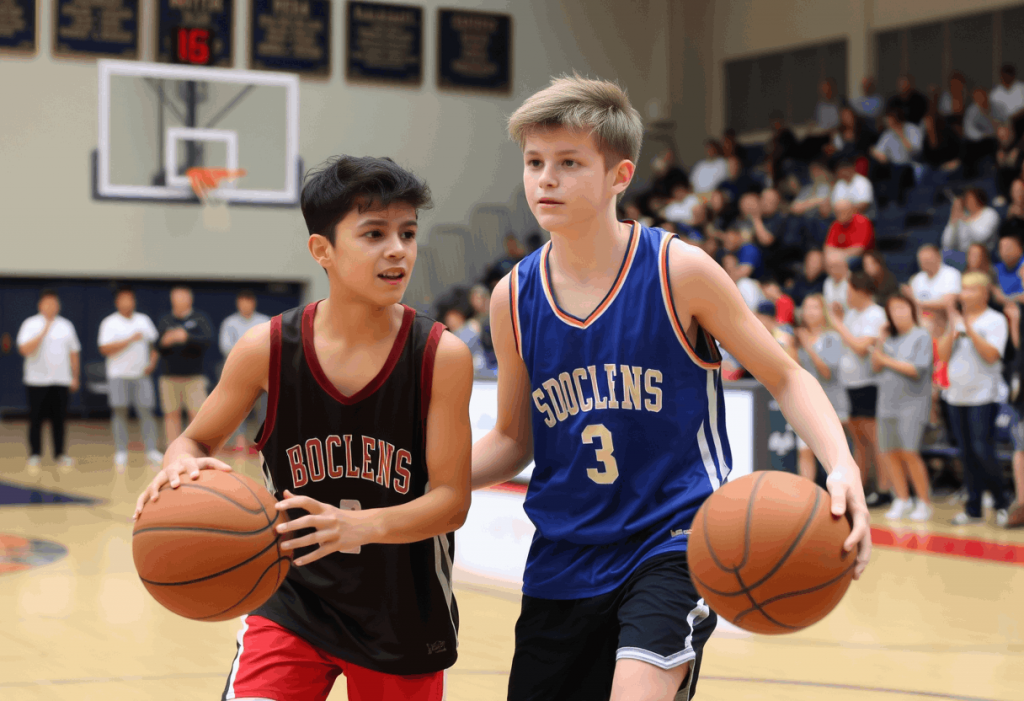
4. Add specific image settings.
Provide relevant data about the elements of your image to further clarify your request. Any combination of colors, lights, shapes, proportions, color schemes, and textures might be used for this. To make your prompt more visually appealing, you may use a particular lighting effect, such as chiaroscuro, or use a different lighting source, such the sun, moon, or even a spotlight.
“Generate image Claude Monet Impressionism girl riding a bicycle towards the horizon after sunset“

Several AI Art Prompt Suggestions
Creating the most effective AI art prompts might be difficult. It calls for a great deal of critical thought. When you are writing them, please keep the following extra points in mind.
- Choose terms that are comprehensible to the AI generation. The use of very difficult or rare words will prevent the AI’s neural networks from recognizing them.
- Make your prompts short and clear. It is advised that prompts contain at leatst five words, but avoid overwhelming the algorithm with excessive detail.
- Try more adjectives. Make use of a variety of adjectives to convey the subject, style, and composition of your image.
- Avoid using phrases with contradictory meanings. For instance, if you define the style of your AI painting as both “abstract” and “realistic,” the generator will probably become confused.
- Use references if necessary. Include in your prompt any specific creative style, era, or topic matter you wish to draw attention to. For example, “Monet style”, “Cyberpunk” Citations provide context for the AI to build the vision you have in mind.
- Consider the image frame and composition. Would you like a broad or close-up shot? Point out the ideal location for the subject or focal point within the frame. For example, “Close-up of a cat’s face, with the face occupying the right two-thirds of the frame”
- To guarantee clarity and appropriate organization, comma-separate each part of your request. The AI image generator will be able to provide findings more accurately if your suggestions are more detailed. Long instructions, however, may need to be clarified for the AI and produce subpar outcomes.
Making AI image prompts that produce the imaginative and distinctive outcomes you desire is made easier by adhering to these suggestions. You can use trial and error to create prompts that make the most of AI art generation.
Try Your Prompting Art with an AI Generator
Once you have an idea for an AI art prompt, it’s time to generate your image! The famous AI art generator PicLumen is a good choice. With the help of PicLumen, users can quickly and easily turn their ideas into beautiful pieces of art.
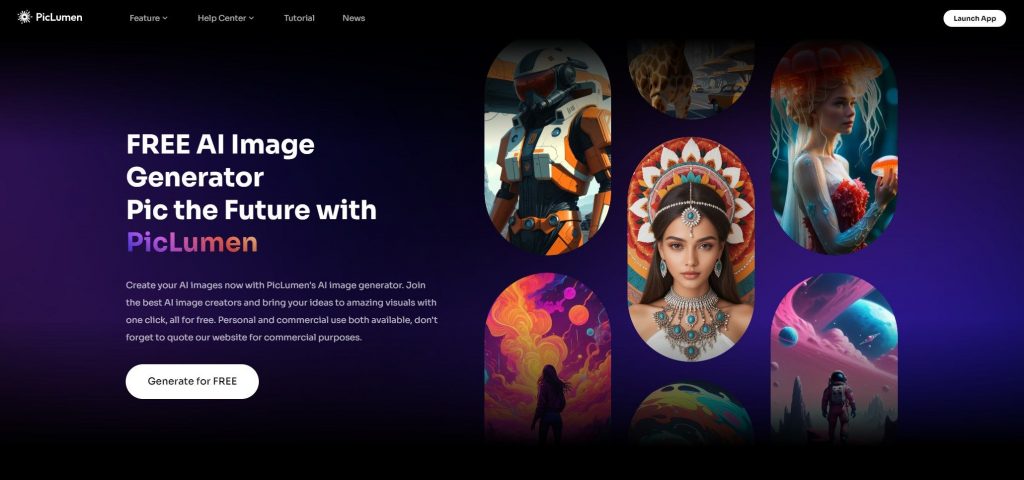
Piclumen provides some style model options and size options to help you generate the desired images faster. You can refer to the detailed generation guide.

Frequently Asked Question
Q: Is there a limit on the number of prompt words?
A: It is recommended that you keep your prompts around 100 words. Although there are no set word or character restrictions for AI image prompts, different AI art generators have varying upper character or word limits.
Q: What are the best prompts for AI art?
A: The greatest prompts employ short, precise instructions that you may convey to an AI art generator.
Q: Can I use Chatgpt to write an AI prompt?
A: You can use Chatgpt to generate basic image prompts, but it is recommended that you manually add detailed descriptions to get higher-quality image results.
Conclusion
Generally speaking, while composing your prompt, it’s ideal to use precise nouns with descriptive adjectives. Tell the AI exactly what you would want to see in the picture. Explain the topic, the color scheme, the mood, the style, and any other information that may aid the AI. The more specifics, the better.
Now you have the tool to spark your imagination and produce some genuinely original AI art. Try it out and discover what type of AI image will be generated in response to your prompts.
